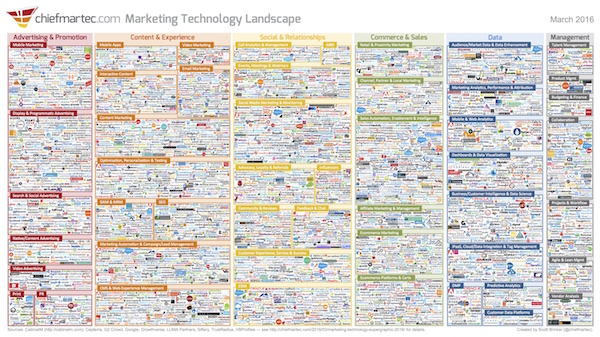One of the latest trends in search is the growing use of digital assistants powered by voice search. In 2014, Google conducted a Mobile Voice Study which revealed that 55% of teens and 42% of adults use voice search more than once a day. More recently, Gary Illyes, webmaster trends analyst for Google, noted that the number of voice searches have more than doubled since 2015 while the company’s CEO Sundar Pichai recently stated that voice searches currently represent 20% of all Google searches.

Amazon’s Alexa is one of the more popular voice search-based virtual assistants
Voice search-based assistants like Siri, Cortana, and Google aren’t just on smartphones anymore either. Other than the iPhone and iPad, Siri is on the Apple Watch, the latest Apple TV, and in your car via CarPlay. Likewise, Cortana and Google have recently expanded to cars and tablets. You may have also heard of Alexa – Amazon’s voice service for their handsfree Echo device. Alexa answers questions, gives information on local businesses, and reads the news, among other features. As voice assistants become increasingly present in our daily lives and their accuracy and usefulness continues to improve, the number of voice searches will only continue to grow.
And while all of this change will ultimately make our lives easier, voice search and the use of virtual assistants presents a new search engine optimization challenge. Namely, how will search engine optimization change in an environment where the user no longer looks at the screen and only the first result is typically read?
Voice Search’s SEO Impact
As of this writing, voice-specific search analytics and metrics do not yet exist. Google has suggested that voice search reporting will be coming to Search Console’s Search Analytics report. Voice search reporting in Google Analytics would segment out how people search for your site using a keyboard versus voice search, but at this point it’s hard to predict when that capability will arrive.
So in the absence of any data, we can assume that the primary SEO impact of virtual assistants and voice search will be to make the top search ranking even more valuable. With most voice assistants reading the first result aloud and then stopping, it’s likely that as these assistants improve fewer searchers will work their way down the google rankings.
The number of voice searches have more than doubled since 2015.
That’s a long way of saying that search engine optimization will become even more important in the era of voice search. So let’s look at how exactly we can optimize sites for voice search.
SEO Optimization Strategies for Voice Search
1. Include an FAQ page on your website
People use conversational speech when they use voice search, and they often ask questions with common phrases. These phrases include words like “who”, “what”, “where”, “when”, and “how”. For example, rather than searching “Samsung VR”, people are more likely to search “What is Samsung VR?” The chart below shows how question phrases have grown on a yearly basis. To increase your business’ chances of being picked up by a voice assistant, use an FAQ page on your website with questions that begin with these common phrases, and include conversational answers. You ultimately want to focus on ranking as highly as possible for the questions consumers will ask about your product/service.
2. Use long-tail keywords targeting spoken phrases
Because voice searches are conversational in nature, marketers should focus on using long-tail keywords. Long-tail keywords are phrases with anywhere from 3-5 keywords that are specific to a product or service but not necessarily the most common searches. Google AdWords’ keyword planner can assist you in identifying relevant, longer keywords for your business in the form of questions. For example, rather than using the target keyword “Cancún vacation”, try using “What’s the best Cancún vacation package in winter”.
3. Focus SEO efforts on listing, ranking and review sites
Just as in the pre-voice search era, virtual assistants are looking to provide the best, most credible results as quickly as possible. This means that, increasingly, the search deck will be stacked in favor of those organizations that are well-represented on the third-party review/ranking/listing sites such as Yelp, Angie’s List, Capterra, etc. where voice assistants gather most of their information. Make sure that you’ve established at least a basic page on all list sites, and encourage your customers to leave you reviews on Google, Yelp, or wherever they prefer. For more prominent brands and individuals, keep an eye on Wikipedia, which is where most of the assistants start when asked general knowledge questions.
4. Think location first
If your business has a physical presence, it is even more crucial to optimize your content for voice assistants. Voice searches are often on smartphones are usually location-dependent, ending with “nearby” or “near me”, and will display different results based on the searcher’s proximity to your business. It’s crucial that you make sure your business location is listed on all the major directories (Google, Apple and Bing Maps), and that details such as your hours and phone number are correct.
When it comes to the description you’re posting on these sites, think about what consumers will search for to find your business. For example, if you are a Neapolitan-style pizza restaurant in Washington DC, you may want to use keywords like “best pizza in Washington DC” or “Neapolitan pizza restaurant with vegetarian and gluten-free options”.
The Future of Voice Assistants
While voice assistants present a new challenge to marketers, they are also an additional opportunity to reach a target audience. Voice search will continue to grow, making up an estimated half of all searches by 2020. So make sure that you’re continually thinking about the conversation you want to have with your potential customers. Put yourself in their shoes, and act accordingly. You’ll be glad you did.


















